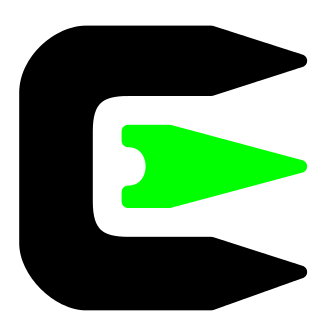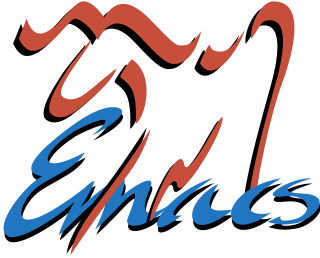
Bash is a Unix shell and command language written by Brian Fox for the GNU Project as a free software replacement for the Bourne shell. First released in 1989, it has been used as the default login shell for most Linux distributions. Bash was one of the first programs Linus Torvalds ported to Linux, alongside GCC. A version is also available for Windows 10 and Windows 11 via the Windows Subsystem for Linux. It is also the default user shell in Solaris 11. Bash was also the default shell in versions of Apple macOS from 10.3 to 10.15, which changed the default shell to zsh, although Bash remains available as an alternative shell.

Cygwin is a Unix-like environment and command-line interface for Microsoft Windows. Cygwin's purpose is expressed in its motto: "Get that Linux feeling – on Windows".

An operating system (OS) is system software that manages computer hardware and software resources, and provides common services for computer programs.

A shell script is a computer program designed to be run by a Unix shell, a command-line interpreter. The various dialects of shell scripts are considered to be scripting languages. Typical operations performed by shell scripts include file manipulation, program execution, and printing text. A script which sets up the environment, runs the program, and does any necessary cleanup or logging, is called a wrapper.

A Unix shell is a command-line interpreter or shell that provides a command line user interface for Unix-like operating systems. The shell is both an interactive command language and a scripting language, and is used by the operating system to control the execution of the system using shell scripts.

vi is a screen-oriented text editor originally created for the Unix operating system. The portable subset of the behavior of vi and programs based on it, and the ex editor language supported within these programs, is described by the Single Unix Specification and POSIX.

A terminal emulator, or terminal application, is a computer program that emulates a video terminal within some other display architecture. Though typically synonymous with a shell or text terminal, the term terminal covers all remote terminals, including graphical interfaces. A terminal emulator inside a graphical user interface is often called a terminal window.

A man page is a form of software documentation usually found on a Unix or Unix-like operating system. Topics covered include computer programs, formal standards and conventions, and even abstract concepts. A user may invoke a man page by issuing the man command.

Newline is a control character or sequence of control characters in character encoding specifications such as ASCII, EBCDIC, Unicode, etc. This character, or a sequence of characters, is used to signify the end of a line of text and the start of a new one.

A computer terminal is an electronic or electromechanical hardware device that can be used for entering data into, and transcribing data from, a computer or a computing system. The teletype was an example of an early-day hard-copy terminal and predated the use of a computer screen by decades.

In computing, text-based user interfaces (TUI), is a retronym describing a type of user interface (UI) common as an early form of human–computer interaction, before the advent of modern conventional graphical user interfaces (GUIs). Like GUIs, they may use the entire screen area and accept mouse and other inputs. They may also use color and often structure the display using special graphical characters such as ┌ and ╣, referred to in Unicode as the "box drawing" set. The modern context of use is usually a terminal emulator.

In some operating systems, including Unix and Linux, a pseudoterminal, pseudotty, or PTY is a pair of pseudo-device endpoints (files) which establish asynchronous, bidirectional communication (IPC) channel between two or more processes. The master provides means by which a terminal emulator process controls the slave. The slave emulates a hardware text terminal device. PTY are similar to bidirectional pipes.

less is a terminal pager program on Unix, Windows, and Unix-like systems used to view the contents of a text file one screen at a time. It is similar to more, but has the extended capability of allowing both forward and backward navigation through the file. Unlike most Unix text editors/viewers, less does not need to read the entire file before starting, allowing for immediate viewing regardless of file size.
A runlevel is a mode of operation in the computer operating systems that implements Unix System V-style initialization. Conventionally, seven runlevels exist, numbered from zero to six. S is sometimes used as a synonym for one of the levels. Only one runlevel is executed on startup; run levels are not executed one after another.

A command shell is a command-line interface to interact with and manipulate a computer's operating system.

In computing, more is a command to view the contents of a text file one screen at a time. It is available on Unix and Unix-like systems, DOS, Digital Research FlexOS, IBM/Toshiba 4690 OS, IBM OS/2, Microsoft Windows and ReactOS. Programs of this sort are called pagers. more is a very basic pager, originally allowing only forward navigation through a file, though newer implementations do allow for limited backward movement.

pg is a terminal pager program on Unix and Unix-like systems for viewing text files. It can also be used to page through the output of a command via a pipe. pg uses an interface similar to vi, but commands are different.

GNU Emacs is a free software text editor. It was created by GNU Project founder Richard Stallman, based on the Emacs editor developed for Unix operating systems. GNU Emacs has been a central component of the GNU project and a flagship project of the free software movement. Its name has occasionally been shortened to GNUMACS. The tag line for GNU Emacs is "the extensible self-documenting text editor".
most is a terminal pager program on Unix, OpenVMS, MS-DOS, Windows and Unix-like systems used to view the contents of a text file one screen at a time. Programs of this sort are called pagers. It is similar to more, but has the extended capability of allowing both forward and backward navigation through the file, and can scroll left and right. most also supports multiple windows.

A command-line interpreter or command-line processor uses a command-line interface (CLI) to receive commands from a user in the form of lines of text. This provides a means of setting parameters for the environment, invoking executables and providing information to them as to what actions they are to perform. In some cases the invocation is conditional based on conditions established by the user or previous executables. Such access was first provided by computer terminals starting in the mid-1960s. This provided an interactive environment not available with punched cards or other input methods.

















